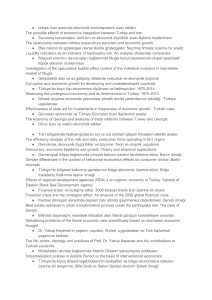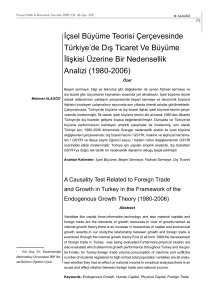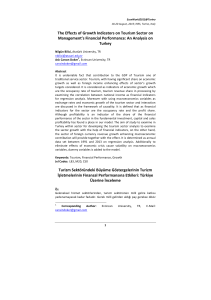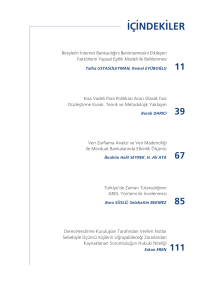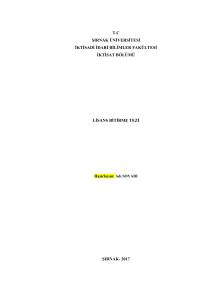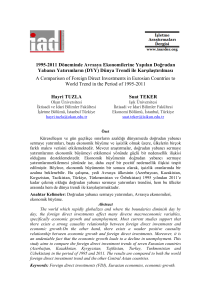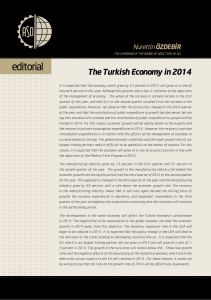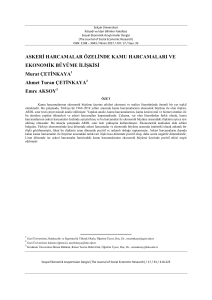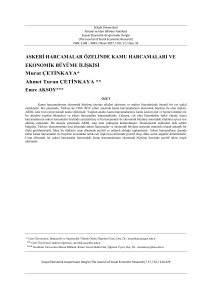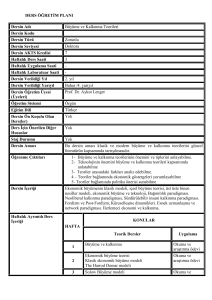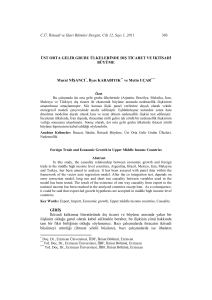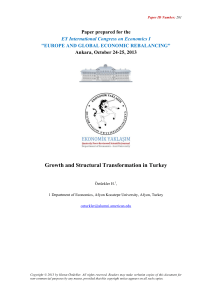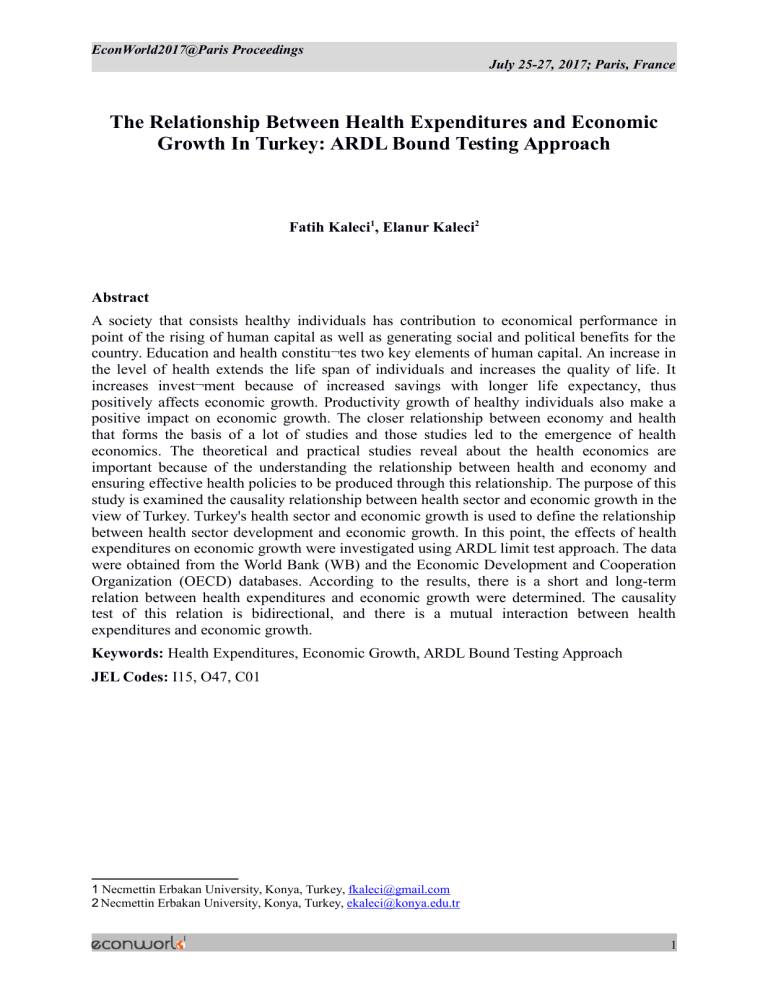
EconWorld2017@Paris Proceedings
July 25-27, 2017; Paris, France
The Relationship Between Health Expenditures and Economic
Growth In Turkey: ARDL Bound Testing Approach
Fatih Kaleci1, Elanur Kaleci2
Abstract
A society that consists healthy individuals has contribution to economical performance in
point of the rising of human capital as well as generating social and political benefits for the
country. Education and health constitu¬tes two key elements of human capital. An increase in
the level of health extends the life span of individuals and increases the quality of life. It
increases invest¬ment because of increased savings with longer life expectancy, thus
positively affects economic growth. Productivity growth of healthy individuals also make a
positive impact on economic growth. The closer relationship between economy and health
that forms the basis of a lot of studies and those studies led to the emergence of health
economics. The theoretical and practical studies reveal about the health economics are
important because of the understanding the relationship between health and economy and
ensuring effective health policies to be produced through this relationship. The purpose of this
study is examined the causality relationship between health sector and economic growth in the
view of Turkey. Turkey's health sector and economic growth is used to define the relationship
between health sector development and economic growth. In this point, the effects of health
expenditures on economic growth were investigated using ARDL limit test approach. The data
were obtained from the World Bank (WB) and the Economic Development and Cooperation
Organization (OECD) databases. According to the results, there is a short and long-term
relation between health expenditures and economic growth were determined. The causality
test of this relation is bidirectional, and there is a mutual interaction between health
expenditures and economic growth.
Keywords: Health Expenditures, Economic Growth, ARDL Bound Testing Approach
JEL Codes: I15, O47, C01
1 Necmettin Erbakan University, Konya, Turkey, fkaleci@gmail.com
2 Necmettin Erbakan University, Konya, Turkey, ekaleci@konya.edu.tr
1
EconWorld2017@Paris Proceedings
July 25-27, 2017; Paris, France
Türkiye’de Sağlık Harcamaları İle Ekonomik Büyüme Arasındaki
İlişki: ARDL Sınır Testi Yaklaşımı
Özet
Sağlıklı bireylerden oluşan bir toplum; ülke için, sosyal ve siyasi fayda üretmenin yanı sıra
beşeri sermayenin kalitesinin yükselmesi açısından ekonomik performansa da katkıda
bulunmaktadır. Beşeri sermayenin iki te¬mel unsurunu eğitim ve sağlık oluşturmaktadır.
Sağlık düzeyinin artması birey¬lerin yaşam sürelerini uzatmakta, yaşam kalitelerini
yükseltmektedir. Yaşam sü¬resinin uzaması nedeniyle artan tasarrufların yatırımları artırması
ve verimlilik artışı da ekonomik bü¬yümeyi olumlu etkilemektedir. Ekonomi ile sağlık
arasındaki bu yakın ilişki, çok sayıda araştırmanın zeminini oluşturmakla birlikte yapılan
çalışmalar sağlık ekonomisinin doğmasını sağlamıştır. Sağlık ekonomisi konusunda ortaya
konulan teorik ve uygulamalı çalışmalar, sağlık ve ekonomi ilişkisinin anlaşılmasını ve bu
ilişki üzerinden etkili sağlık politikaları üretilmesini sağlamak açısından önemlidir. Bu
çalışmanın amacı, sağlık harcamaları ile ekonomik büyüme arasındaki nedensellik ilişkisinin
incelenmesi ve Türkiye örneği üzerinden ortaya konmasıdır. Çalışma kapsamında sağlık
sektörü ile ekonomik büyüme arasındaki nedensellik ilişkisinin belirlenmesi ve bu ilişkinin
zaman içindeki seyrinin ortaya konması hedeflenmektedir. Bu noktada, sağlık harcamalarının
ekonomik büyüme üzerindeki etkisi ARDL sınır testi yaklaşımı kullanılarak araştırılmıştır.
Veriler Dünya Bankası (WB) ve Ekonomik Kalkınma ve İşbirliği Örgütü’nün (OECD) veri
bankalarından temin edilmiştir. Çalışma sonuçlarına göre değişkenler arasında kısa ve uzun
dönemli ilişki tespit edilmiştir. Bu ilişkinin nedensellik testine göre ise çift yönlü bir ilişki
saptanmış olup ekonomik büyüme ile sağlık harcamaları arasında karşılıklı bir etkileşim
bulunmaktadır.
JEL Kodları: I15, O47, C01
2

